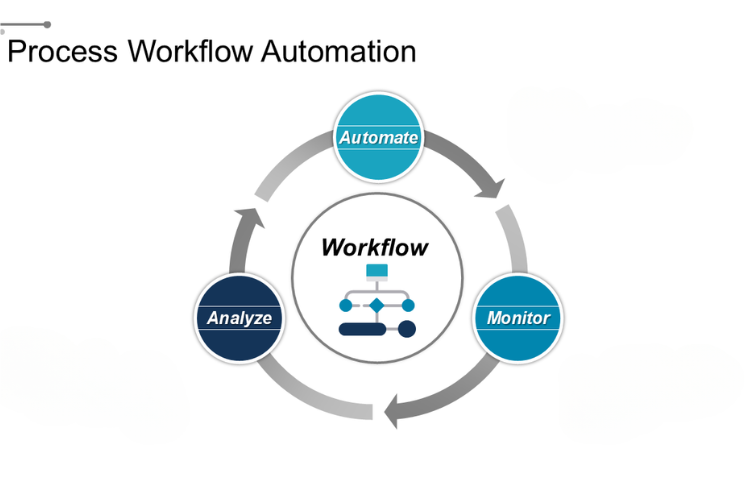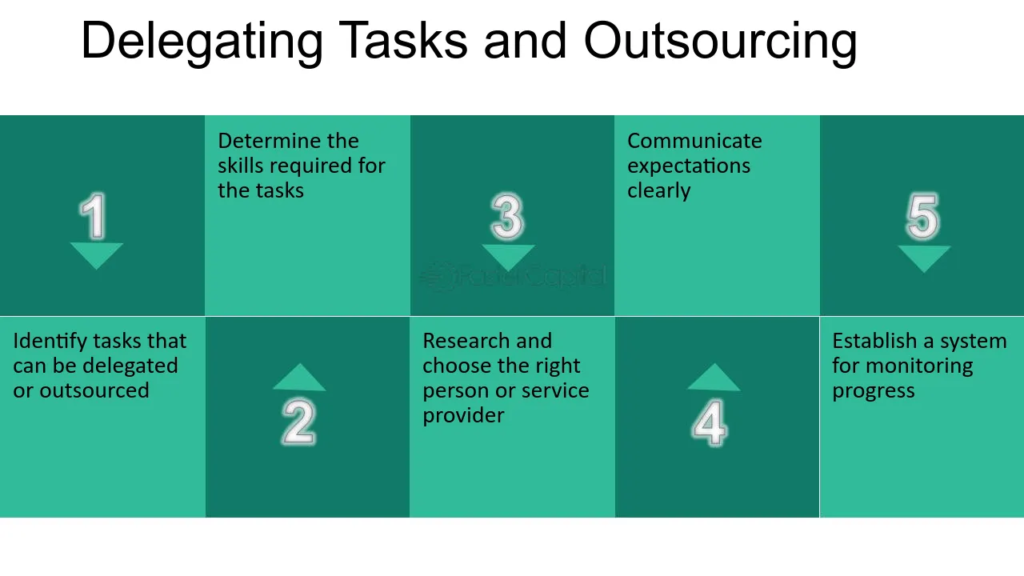How to Master Time Management isn’t just about getting more done — it’s about getting the right things done without feeling overwhelmed. In today’s fast-paced world, time is one of your most valuable resources. Whether you’re a student, professional, entrepreneur, or just someone trying to make life a little more organized, mastering time management can help you be more productive, reduce stress, and make room for what truly matters.
In this guide, we’ll break down the most effective strategies, tools, and habits that can help you take control of your time and use it wisely.
Table of Contents
Goal Setting and Prioritization
One of the first steps in learning how to master time management is setting clear goals and knowing how to prioritize them. Without a specific direction, it’s easy to spend time on tasks that feel urgent but don’t actually move you closer to your goals.
Start by creating SMART goals — goals that are Specific, Measurable, Achievable, Relevant, and Time-bound. For example, instead of saying “I want to be more productive,” a SMART version would be, “I want to finish my client project by Friday at 3 PM.” This gives you a clear target and a deadline to stay focused.
Once your goals are set, the next step is to prioritize your tasks. One of the most effective methods for this is the Eisenhower Matrix, which helps you organize your tasks into four categories:

- Important and Urgent – Do these tasks right away.
- Important but Not Urgent – Schedule time for these tasks.
- Not Important but Urgent – Delegate these if possible.
- Not Important and Not Urgent – Eliminate or minimize these tasks.
This method allows you to stay ahead of deadlines and avoid wasting time on things that don’t matter. The more time you spend in the “important but not urgent” zone, the more in control of your schedule you’ll feel.

Another simple prioritization strategy is the Top 3 Method. At the start of each day, identify the three most important tasks you need to complete. Focusing on just three priorities helps you avoid overwhelm and makes your day feel more manageable.
Setting goals and learning how to prioritize effectively are essential parts of mastering time management. When you’re clear on what matters most, it becomes much easier to use your time wisely.
Planning and Scheduling

If you want to learn how to master time management, effective planning and scheduling are non-negotiable. When you take time to plan your day or week in advance, you stay focused, avoid decision fatigue, and reduce the chances of wasting time on unimportant tasks.
Start with a weekly planning session. Every Sunday or Monday, look at your calendar and map out your key priorities. Then, break those down into smaller tasks and slot them into your daily schedule. This creates structure and helps you stay on track even when things get busy.
One popular method is time blocking — assigning specific chunks of time to specific tasks. Instead of just writing a to-do list, you plan exactly when you’ll do each task. For example, you might block 9:00 AM to 11:00 AM for focused work, 1:00 PM to 2:00 PM for meetings, and so on. Time blocking helps prevent multitasking and keeps your work organized.

To make your planning even more effective, use time tracking tools like Clockify or Toggl. These apps allow you to see exactly how you’re spending your time and identify where it’s being wasted. For example:
- Clockify is great for tracking time by project or client and provides detailed reports you can use to optimize your schedule.
- Toggl is simple, beginner-friendly, and lets you track time with just one click — perfect if you’re new to time management tools.
Once you start tracking, you may be surprised at how much time you spend on things like email or social media. With that awareness, you can adjust your schedule to reflect your true priorities.
Planning and scheduling aren’t just about staying busy — they’re about being intentional. When you know what to focus on and when to do it, you gain control over your day and make steady progress toward your goals.
Task Management Systems
A reliable task management system is essential if you’re serious about learning how to master time management. It’s not enough to just “remember” what needs to be done — you need a structured way to capture, organize, and track your tasks so that nothing slips through the cracks.

Task management systems help you:
- Break big projects into smaller, manageable steps
- Set deadlines and reminders
- Organize tasks by category or priority
- Track your progress over time
You can choose from a variety of tools, depending on your preferences:
- Todoist: A user-friendly app that lets you create simple to-do lists, set recurring tasks, and prioritize items with labels and color-coded tags.
- Trello: A visual, drag-and-drop system that’s great for managing workflows using boards and cards. Ideal for both individuals and teams.
- Asana: Perfect for collaborative projects where you need to assign tasks, set deadlines, and keep everything in one place.
If you prefer a more minimal approach, even a basic notebook or bullet journal can serve as an effective task management system — as long as it’s consistent and works for you.
The key is to keep your system updated daily. Make it part of your routine to review and adjust your task list every morning or evening. This ensures you’re always aware of your next steps and can focus on what truly matters.
When you rely on a strong task management system, you free up mental space, reduce stress, and boost your productivity — all critical components of mastering time management.
Eliminating Distractions
If you want to learn how to master time management, one of the most important things you can do is eliminate distractions. No matter how well you plan your day, distractions can quickly derail your focus and eat away at your time without you even noticing.

The most common distractions include:
- Social media and phone notifications
- Constant email checking
- Background noise
- Multitasking
- Cluttered or noisy environments
To stay on track, start by identifying your biggest distractions. What pulls your attention away during deep work? Once you’re aware of them, you can take specific steps to minimize or remove them.
Here are a few simple but powerful strategies:
- Use website blockers like Freedom, Cold Turkey, or StayFocusd to limit access to distracting sites during work hours.
- Silence notifications on your phone or use Focus Mode or Do Not Disturb while working.
- Batch your communication by checking email and messages only at set times, rather than constantly throughout the day.
- Create a distraction-free workspace with minimal clutter and noise. Even wearing noise-canceling headphones can help you stay in the zone.
If you work from home or in a shared space, communicate your focus hours to others so you can work uninterrupted.
Remember, mastering time management isn’t just about doing more — it’s about staying focused on the right things. Removing distractions helps you do better work in less time, which means more progress and less stress.

Productivity Techniques
To truly learn how to master time management, you need to go beyond just organizing your schedule — you need to find and apply productivity techniques that help you work smarter, not harder. These methods are designed to boost focus, reduce procrastination, and help you make the most of your time.
Here are some of the most effective techniques:
1. The Pomodoro Technique
This method involves working in focused 25-minute intervals (called “Pomodoros”) followed by a 5-minute break. After four Pomodoros, take a longer 15–30 minute break.
This technique helps maintain focus while preventing burnout.

2. Time Blocking
Time blocking means scheduling your day by assigning specific time slots for different tasks or categories of work. For example, 9–11 AM might be for deep work, while 1–2 PM is for meetings. This helps you stay intentional with your time and avoid multitasking.
3. The 80/20 Rule (Pareto Principle)
This principle suggests that 80% of your results come from 20% of your efforts. Identify the high-impact tasks that truly move the needle, and prioritize those over low-value busy work.

4. Eat That Frog
Based on the idea of doing your hardest or most important task first thing in the morning, this technique helps you overcome procrastination and build momentum for the rest of your day.
5. The Two-Minute Rule
If a task takes less than two minutes to complete, do it immediately. This prevents small tasks from piling up and cluttering your to-do list.
The key to mastering these techniques is experimentation. Try one method at a time and track how it impacts your focus and productivity. Everyone works differently, so the right approach will depend on your personality, workload, and goals.
When used consistently, these productivity techniques can dramatically increase your output and help you make better use of your time.

Delegation and Outsourcing
A key part of learning how to master time management is realizing that you don’t have to do everything yourself. In fact, trying to handle every task alone can slow you down and lead to burnout. Delegation and outsourcing are powerful strategies that free up your time so you can focus on the work that truly matters.
What is Delegation?
Delegation means assigning tasks to others on your team, whether you’re a business owner, manager, or working within a group. The goal is to match tasks with the right people, based on their skills and availability. This not only improves efficiency but also empowers others to take responsibility.
Common tasks to delegate:
- Routine admin work
- Email and calendar management
- Research and data collection
- Repetitive or time-consuming tasks
What is Outsourcing?
Outsourcing involves hiring someone outside your organization to handle specific tasks. Freelancers, virtual assistants, and specialized agencies can often complete tasks faster and more efficiently than doing it in-house — especially if the task is outside your skill set.
Examples of tasks to outsource:
- Graphic design
- Web development
- Content writing
- Social media management
- Bookkeeping or accounting

By delegating or outsourcing strategically, you can redirect your time and energy toward high-impact work — the kind that aligns with your goals and drives results.
How It Helps You Master Time Management
When you stop trying to do everything yourself, you gain more time to plan, prioritize, and think creatively. This shift in focus is essential if you want to master time management at a higher level.
Пам’ятайте, час – один із ваших найцінніших ресурсів. Делегування та аутсорсинг не є ознакою слабкості — це розумні стратегічні кроки, які допомагають вам працювати ефективніше та зменшити стрес.
The Role of Habits and Routines
If you’re serious about learning how to master time management, building strong habits and routines is essential. While tools and techniques can help, it’s your daily actions — the things you do without thinking — that truly shape how you use your time.
Why Habits Matter

Habits reduce the need for constant decision-making. Instead of wondering what to do next, good habits allow you to move through your day with intention and consistency. This saves mental energy and helps you stay focused on your priorities.
Examples of time-saving habits:
- Planning your day the night before
- Starting your mornings with a consistent routine
- Checking emails only at scheduled times
- Reviewing your goals at the start of each week
These small actions, done daily, create structure and help you stay on track without relying on motivation alone.
The Power of Routines
A routine is a series of habits that you follow in a specific order. Morning routines, work startup routines, and evening wind-down routines are all powerful tools that increase your productivity and reduce wasted time.

For example:
- A morning routine might include exercise, journaling, and setting your daily goals.
- A work routine could involve checking your calendar, reviewing your to-do list, and tackling your most important task first.
- An evening routine helps you reflect on your progress and prepare for the next day.
Routines build momentum and create a rhythm in your life, which makes it easier to stay consistent over time — a key ingredient in mastering time management.
How to Build Better Habits
Start small. Pick one habit that would make your day more efficient, and commit to doing it consistently for a few weeks. Use habit-tracking apps, sticky notes, or calendar reminders to keep yourself accountable. Over time, these small changes will compound and lead to greater control over your time.
Using Technology Wisely
Technology can either help you or hurt you — it all depends on how you use it. If you’re trying to figure out how to master time management, learning to use tech tools intentionally (instead of letting them control your time) is a game-changer.
When used correctly, technology can:
- Automate repetitive tasks
- Keep you organized
- Improve focus
- Save time and mental energy
But without boundaries, it can also become a major distraction — think constant notifications, endless scrolling, or getting pulled into non-essential tasks.
Tools That Boost Time Management
Here are a few types of technology that can support your productivity:

- Calendar apps like Google Calendar or Outlook for scheduling meetings, setting reminders, and blocking focus time.
- To-do list apps like Todoist or Microsoft To Do to track daily and long-term tasks.
- Time tracking tools like Toggl or Clockify to monitor how you spend your time and identify areas for improvement.
- Automation tools like Zapier or IFTTT to connect apps and eliminate repetitive tasks (e.g., auto-saving email attachments to Google Drive).
- Focus tools like Forest, Freedom, or Cold Turkey to help you stay off distracting websites and apps.
The key is to choose the right tools for your needs and use them consistently. Overloading yourself with apps can lead to overwhelm, so keep your tech stack simple and purposeful.
Set Boundaries with Tech
Being intentional also means setting limits on tech use. Turn off non-essential notifications, use “Do Not Disturb” modes during deep work, and take regular screen breaks to recharge.
Technology is a powerful ally — but only when you are in control of it. Used wisely, it can help you stay organized, focused, and efficient.
Conclusion
Learning how to master time management is one of the most valuable skills you can develop — both professionally and personally. It’s not about filling every hour of your day with tasks, but about using your time with purpose, clarity, and focus.
By setting clear goals, planning your days, tracking your time, using the right tools, and building better habits, you can take full control of your schedule. Add in smart techniques like task prioritization, delegation, and limiting distractions, and you’ll start to see real, lasting improvements in your productivity and peace of mind.
Remember, mastering time management doesn’t happen overnight. Start small, stay consistent, and keep adjusting your approach until it works for you. The more intentional you are with your time, the more you’ll achieve — with less stress along the way.




